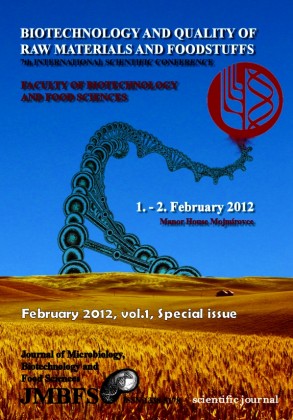IS THE MEAT OF WILD WATERFOWL FIT FOR HUMAN CONSUMPTION? PRELIMINARY RESULTS OF CADMIUM AND LEAD CONCENTRATION IN PECTORAL MUSCLES OF MALLARDS AND COOTS SHOT IN 2006 IN SOUTHERN POLAND
Keywords:
game meat, metals, waterfowl, lead poisoning, cadmiumAbstract
Concentrations of cadmium and lead in pectoral muscles of mallards (N = 15) and coots (N = 15) shot on fishponds in Zator area (southern Poland, Europe) were determined with the graphite furnace AAS. Samples were dried and wet digested in the mixture of HNO3 and HClO4. Median concentration of cadmium was 0.0616 µg.g-1d.w. among mallards and 0.0868 µg.g-1d.w. among coots. Concentrations of lead were higher and median run to 0.1898 µg.g-1d.w. in mallards and to 0.2637 µg.g-1d.w. in coots. No differences in heavy metals concentrations between species were statistically significant. According to the thresholds for foodstuff given by European Commission, meat of all birds was edible in the aspect of cadmium concentration (only meat of one coot contained cadmium near the given border). In the aspect of lead, 26% of researched birds have concentration beyond the safety limit and their meat was not fit for human consumption. Considering the annually number of shot birds, any kind of monitoring must be planned to assess potential consumers’ safety.Downloads
Download data is not yet available.
Downloads
Published
2012-02-01
How to Cite
Jakub Binkowski, L. (2012). IS THE MEAT OF WILD WATERFOWL FIT FOR HUMAN CONSUMPTION? PRELIMINARY RESULTS OF CADMIUM AND LEAD CONCENTRATION IN PECTORAL MUSCLES OF MALLARDS AND COOTS SHOT IN 2006 IN SOUTHERN POLAND. Journal of Microbiology, Biotechnology and Food Sciences, 1(Special issue), 1120–1128. Retrieved from https://office2.jmbfs.org/index.php/JMBFS/article/view/7431
Issue
Section
Food Sciences
License
Copyright (c) 2012 Lukasz Jakub Binkowski

This work is licensed under a Creative Commons Attribution 4.0 International License.
All papers published in the Journal of Microbiology, Biotechnology and Food Sciences are published under a CC-BY licence (CC-BY 4.0). Published materials can be shared (copy and redistribute the material in any medium or format) and adapted (remix, transform, and build upon the material for any purpose, even commercially) with specifying the author(s).

